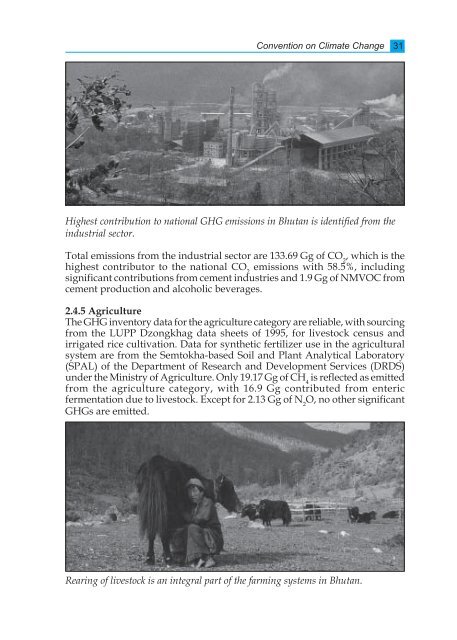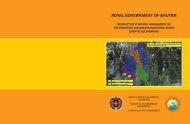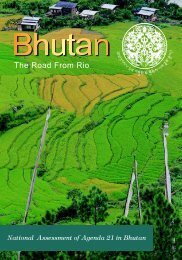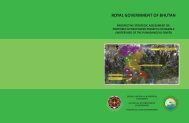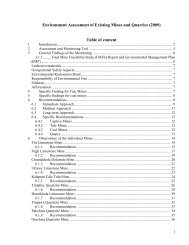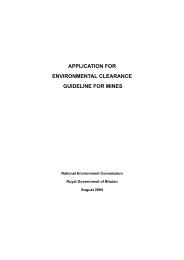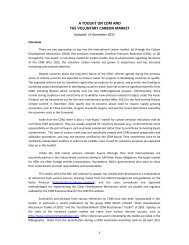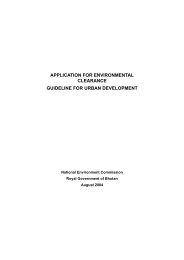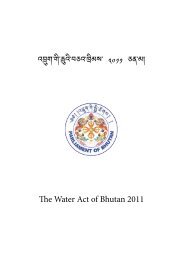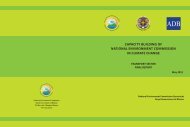Initial National Communication, under UNFCCC, September 2000
Initial National Communication, under UNFCCC, September 2000
Initial National Communication, under UNFCCC, September 2000
Create successful ePaper yourself
Turn your PDF publications into a flip-book with our unique Google optimized e-Paper software.
Convention on Climate Change 31<br />
Highest contribution to national GHG emissions in Bhutan is identified from the<br />
industrial sector.<br />
Total emissions from the industrial sector are 133.69 Gg of CO 2<br />
, which is the<br />
highest contributor to the national CO 2<br />
emissions with 58.5%, including<br />
significant contributions from cement industries and 1.9 Gg of NMVOC from<br />
cement production and alcoholic beverages.<br />
2.4.5 Agriculture<br />
The GHG inventory data for the agriculture category are reliable, with sourcing<br />
from the LUPP Dzongkhag data sheets of 1995, for livestock census and<br />
irrigated rice cultivation. Data for synthetic fertilizer use in the agricultural<br />
system are from the Semtokha-based Soil and Plant Analytical Laboratory<br />
(SPAL) of the Department of Research and Development Services (DRDS)<br />
<strong>under</strong> the Ministry of Agriculture. Only 19.17 Gg of CH 4<br />
is reflected as emitted<br />
from the agriculture category, with 16.9 Gg contributed from enteric<br />
fermentation due to livestock. Except for 2.13 Gg of N 2<br />
O, no other significant<br />
GHGs are emitted.<br />
Rearing of livestock is an integral part of the farming systems in Bhutan.


